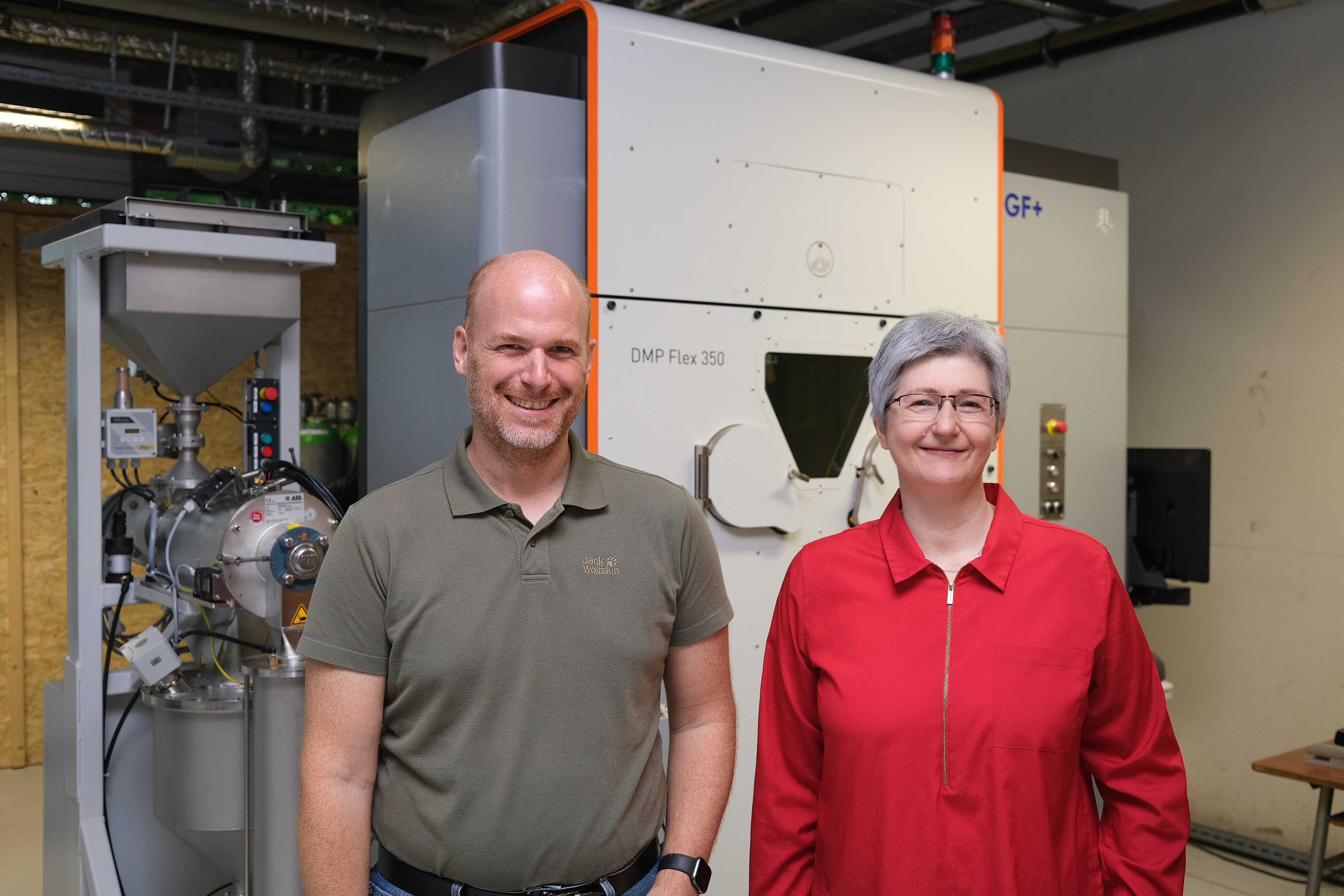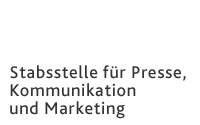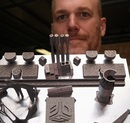Executive Department for
Press, Communication and Marketing
Adolf-Reichwein-Straße 2a Gebäude AVZ (Gebäudeteil AR-NA) 57068 Siegen
Phone: +49 (0)271/740-4915 Fax.: +49 (0)271/740-4911 E-Mail: presse@uni-siegen.de
Making Better Bone Implants Using a 3D Printer
Researchers at the University of Siegen are simulating bone breaks using computers, helping them optimize bone replacements created with a 3D printer.
An accident, a serious illness, or just wear and tear — in some cases a patient’s own bones simply cannot be rescued. An artificial replacement is needed. Titanium implants have proven themselves to be stable, robust, and durable.
In recent years understanding has grown that implants cannot be built in the same way as components for automobiles. They must instead be viewed as parts of an organism, interacting with the biological system and supporting its regeneration until the body is in a position to help itself. The latest trend in bone implants is thus to use a 3D printer capable of reproducing a highly complex micro-structure. This structure allows for the bone cells and blood vessels to grow into the implant and create a connection to the existing bone material.
Improvements and optimizations to the microstructure of bone implants are the focus of work for Prof. Christian Hesch of the Teaching Chair for Numerical Mechanics, together with Prof. Tamara Reinicke of the Teaching Chair for Product Development at the University of Siegen. As part of the project, which is receiving support from the German Research Association (DFG), they are exploring the highly complex mechanics behind this new generation of implants. Their goal: to establish the world's first computer-based simulation of implant behavior up to the point of breakage. “We’re starting by trying to understand the mechanics of these implants as they interact with the patient’s body. The micro-geometry of the 3D printed implants plays a significant role not only under normal loads, but also upon failure. This last scenario is especially bad for patients, since failure is very difficult to detect from outside, even using modern CAT scans,” Prof. Hesch explains. Failure in this case can involve a break in the implant, or also a slackening of its fit with the patient’s body.
The researchers are conducting their basic research using numerical mechanics, including simulations and models of complex materials. In the context of implants, data must be collated at various scales (the sub-millimeter scale for delicate structures, the centimeter scale for the overall implant) to allow for an efficient simulation of the materials and their micro-structure. This serves on the one hand to reduce the calculation load and the energy required to conduct the simulations, but also makes it possible to conduct the many simulation passes needed to optimize the implants.
The project has received 372,000 euros in DFG funding. This includes coverage of costs for the experimental studies on various 3D structures using a 3D printer at the University of Siegen.

Dr. Tamara Reinicke from the Teaching Chair for Product Development and Dr. Christian Hesch from the Teaching Chair for Numerical Mechanics are working on optimization of the micro-structure of bone implants.


